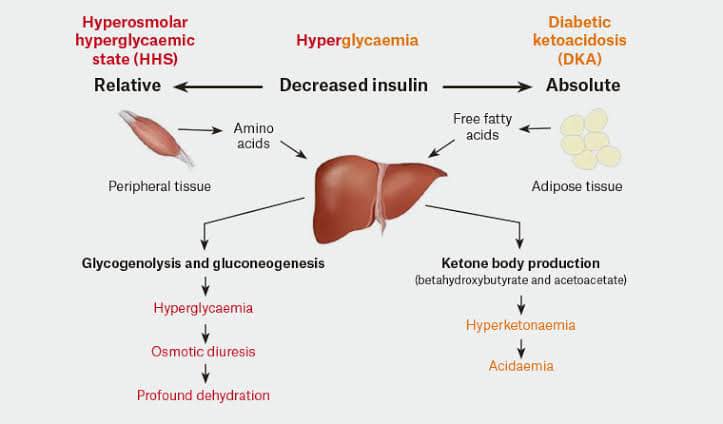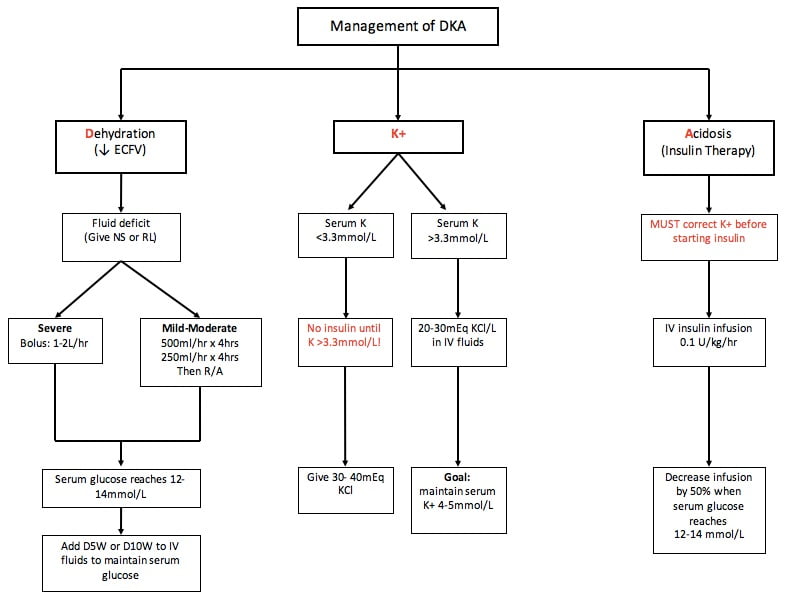Diabetic ketoacidosis, often abbreviated as DKA, is a serious and potentially life-threatening complication of diabetes. It occurs when the body produces high levels of blood acids called ketones due to a lack of insulin. This condition requires immediate medical attention and can affect individuals with both type 1 and type 2 diabetes. In this article, we will explore the causes, symptoms, and treatment options for diabetic ketoacidosis in detail.

Understanding Diabetic Ketoacidosis
Diabetic ketoacidosis is a metabolic state that arises when the body cannot produce enough insulin. Insulin is crucial for allowing glucose to enter cells and be used for energy. Without sufficient insulin, the body starts breaking down fat for fuel, leading to the production of ketones. When these ketones accumulate in the bloodstream, they make the blood more acidic, which can lead to severe health complications if not treated promptly.
Who Is at Risk?
- Individuals with type 1 diabetes are at the highest risk of developing diabetic ketoacidosis because their bodies do not produce insulin.
- People with type 2 diabetes can also develop this condition, although it is less common.
- Other risk factors include missed insulin doses, infections, trauma, heart attacks, alcohol or drug abuse, and certain medications.
Causes of Diabetic Ketoacidosis
The primary cause of diabetic ketoacidosis is insufficient insulin in the body. However, several triggers can lead to this dangerous condition:
Missed Insulin Doses
For individuals with diabetes, skipping insulin injections or not taking oral diabetes medications as prescribed can result in elevated blood sugar levels. Over time, this can lead to the development of diabetic ketoacidosis.
Infections and Illnesses
Infections such as urinary tract infections, pneumonia, or even the flu can increase the body’s need for insulin. The stress caused by these illnesses can trigger diabetic ketoacidosis in people with diabetes.
Physical or Emotional Stress
Stressful situations, whether physical (such as surgery or injury) or emotional (like extreme anxiety), can raise blood sugar levels and contribute to the onset of diabetic ketoacidosis.
Pancreatitis or Other Medical Conditions
Conditions affecting the pancreas, such as pancreatitis, can impair insulin production. Similarly, other diseases that disrupt normal metabolic processes may also lead to diabetic ketoacidosis.
Symptoms of Diabetic Ketoacidosis
Recognizing the symptoms of diabetic ketoacidosis early is critical for preventing severe complications. The signs can develop quickly, sometimes within 24 hours, and may include:
Excessive Thirst and Frequent Urination
One of the earliest symptoms is an unquenchable thirst accompanied by frequent urination. These occur as the body attempts to eliminate excess glucose through urine.
Nausea and Vomiting
As ketone levels rise, individuals may experience nausea and vomiting. This symptom should not be ignored, as it indicates worsening acidosis in the body.
Abdominal Pain
Many people with diabetic ketoacidosis report abdominal pain, which can range from mild discomfort to severe cramping.
Fruity-Smelling Breath
A distinctive fruity odor on the breath, often compared to nail polish remover, is caused by acetone, one of the ketones produced during diabetic ketoacidosis.
Confusion or Fatigue
High levels of ketones and acidity in the blood can affect brain function, leading to confusion, lethargy, or difficulty concentrating.
Rapid Breathing
To compensate for the increased acidity in the blood, the body may begin breathing rapidly, a condition known as Kussmaul respirations.
Treatment Options for Diabetic Ketoacidosis
Diabetic ketoacidosis is a medical emergency that requires immediate intervention. Treatment typically involves hospitalization and focuses on correcting the underlying issues while stabilizing the patient’s condition.
Fluid Replacement
Patients are usually given fluids intravenously to rehydrate the body and dilute the excess glucose in the bloodstream. Proper hydration also helps restore normal kidney function and flush out ketones.
Insulin Therapy
Insulin is administered intravenously to reverse the effects of diabetic ketoacidosis. It helps lower blood sugar levels and stops the liver from producing more ketones.
Electrolyte Replacement
During diabetic ketoacidosis, electrolytes such as sodium, potassium, and chloride become depleted. Replacing these essential minerals is vital for maintaining proper nerve and muscle function.
Monitoring and Supportive Care
Healthcare providers closely monitor patients’ vital signs, blood sugar levels, and electrolyte balances throughout treatment. Additional supportive care, such as oxygen therapy or medications to manage complications, may be necessary depending on the severity of the case.
Preventing Diabetic Ketoacidosis
While diabetic ketoacidosis cannot always be avoided, there are steps individuals with diabetes can take to reduce their risk:
Adhere to Your Diabetes Management Plan
Consistently following your prescribed treatment plan, including taking medications as directed and monitoring blood sugar levels regularly, is key to preventing diabetic ketoacidosis.
Stay Hydrated
Drinking plenty of water helps maintain hydration and supports overall metabolic health.
Recognize Early Warning Signs
Being aware of the symptoms of diabetic ketoacidosis allows you to seek medical help before the condition becomes severe.
Manage Stress and Illness
During periods of illness or stress, work closely with your healthcare provider to adjust your diabetes management plan as needed.
Complications Associated with Diabetic Ketoacidosis
If left untreated, diabetic ketoacidosis can lead to serious complications, including:
Cerebral Edema
This swelling of the brain is rare but can occur in children and young adults undergoing treatment for diabetic ketoacidosis.
Acute Kidney Injury
The buildup of ketones and dehydration can strain the kidneys, potentially causing temporary or permanent damage.
Hypokalemia
Low potassium levels resulting from fluid and insulin therapy can disrupt heart rhythms and muscle function.
Coma or Death
In severe cases, untreated diabetic ketoacidosis can progress to coma or death, underscoring the importance of prompt medical care.
When to Seek Medical Attention
It is crucial to recognize when to seek emergency care for diabetic ketoacidosis. If you experience any combination of the following, contact your healthcare provider immediately:
- High blood sugar levels that do not respond to medication
- Moderate to large amounts of ketones in your urine
- Symptoms such as nausea, vomiting, abdominal pain, or confusion
Early intervention can prevent diabetic ketoacidosis from progressing and save lives.





